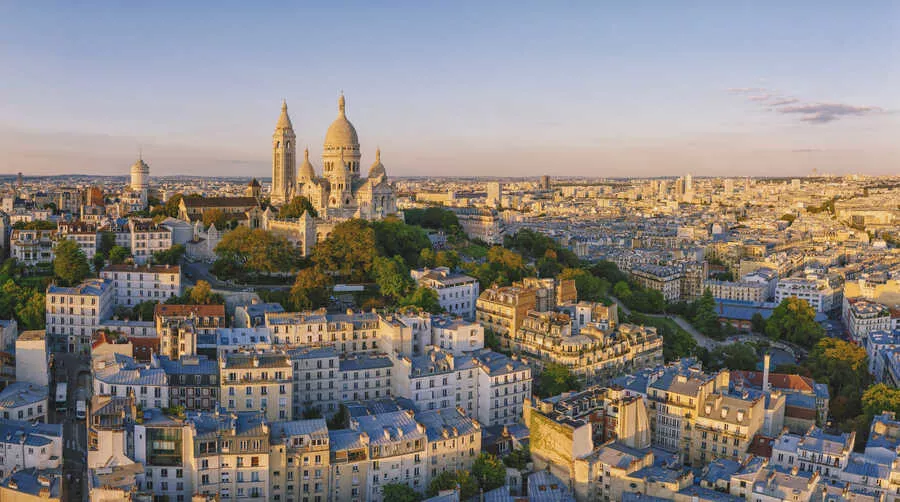Montmartre is a pilgrimage site for tourists from all over the world. People are drawn by the extraordinary beauty of its churches, legendary cabarets, cafes frequented by famous personalities, museums, and galleries.
History
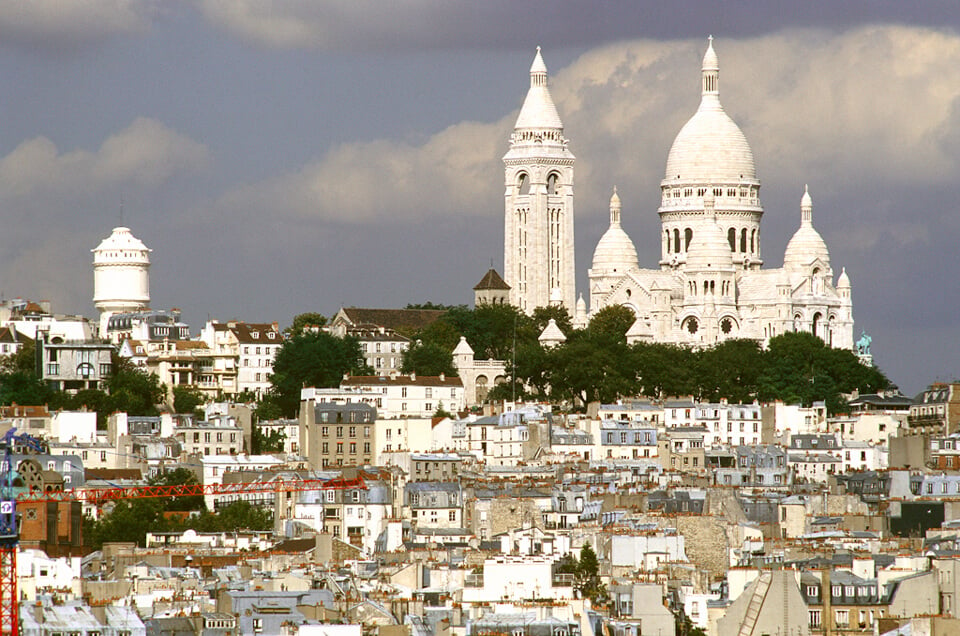
In ancient times, there was a Roman settlement here, where two pagan temples were built—one dedicated to Mars, the god of war, and the other to Mercury, the god of commerce. When gypsum was discovered on the hill, the district became wealthy, leading to the construction of magnificent palaces and churches. It is believed that in the 3rd century, the first bishop of Paris, St. Denis, and his companions were beheaded on Montmartre for their Christian sermons.
In the 12th century, Benedictine monks founded the monastery with the church of Saint-Pierre de Montmartre, consecrated in 1147. In the 19th century, the heights were seized by the troops of General Langeron, but in March 1814, they capitulated, and the Russian Army with allied forces entered Paris. In peaceful times, residents engaged in gypsum mining (one street is named White Square), built mills, and cultivated vineyards. Life in the capital was more expensive, so many, including middle-class citizens, moved to this picturesque suburb.
According to the general reconstruction plan of Paris, the district was annexed to the city in 1860 as part of the 18th arrondissement, which then had a population of 57,000. From the late 19th century, the neighborhood became a haven for bohemia, with great artists, writers, and composers like Van Gogh, Toulouse-Lautrec, Picasso, and Modigliani, Émile Zola, and Hector Berlioz creating their works here. Almost all of them were in need of money, so they lived in shacks with only cold water available from a single tap on each floor.
Origin of the Name
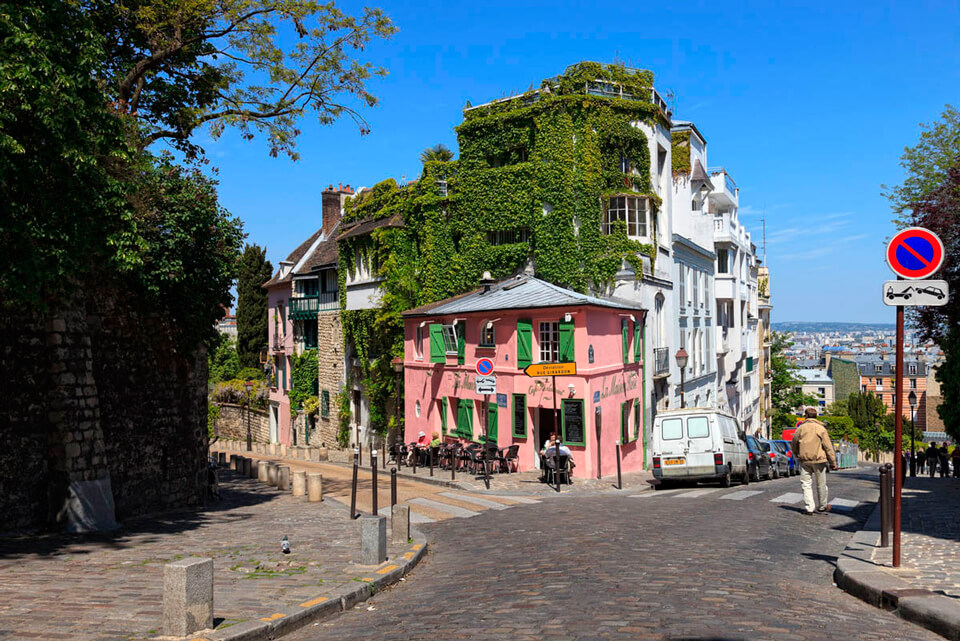
Several theories exist about the origin of the district’s name:
- In 272 AD, according to legend, St. Denis, a Catholic priest, was beheaded here. The hill was named in his honor, “Mons Martyrium,” meaning “Hill of the Martyr.”
- The name also possibly derives from “Mons Martis,” meaning “Mars Hill,” as there was an ancient Roman temple during the antiquity period.
The exact meaning of the name remains unknown.
Attractions
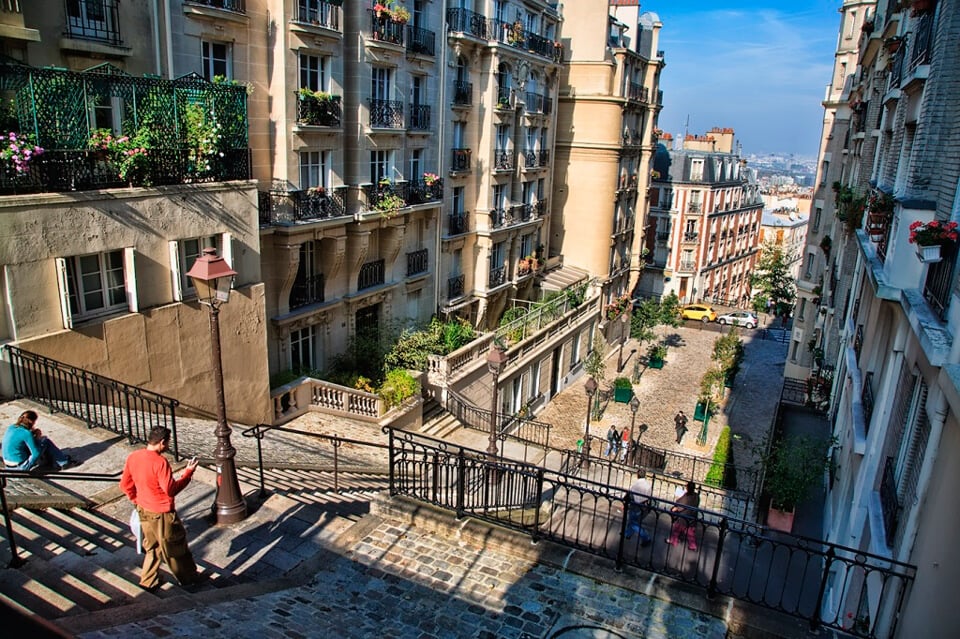
For those visiting the capital for a few days, how can one see the most interesting and significant attractions in all their diversity?
Salvador Dalí Museum: Art enthusiasts should visit the Salvador Dalí Museum near Place du Tertre. It is a small building with an inconspicuous sign, but it houses the most significant collection of the great master’s works. There is a permanent exhibition and temporary displays.
Dalida Square: The legendary French singer of Italian origin, Dalida, lived in Montmartre. Grateful Parisians named a square after her, where a bust of the singer is installed. You can reach it via Rue Girardon.
The Wall of Love: Recently, the Wall of Love has become unusually popular among couples. Initiated by artists Baron and Kito, couples can write the cherished words “I love you” on the wall, a tradition followed by thousands of people in over 200 languages.
These are just a few attractions that might interest tourists. The journey has only begun.
Basilica of the Sacred Heart (Basilique du Sacré-Cœur)
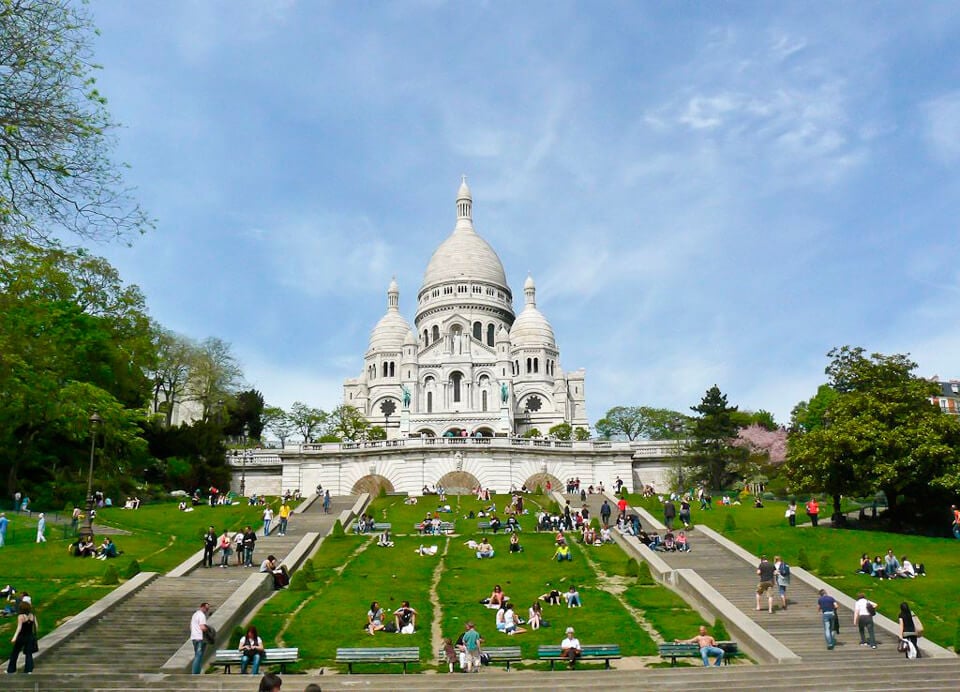
The main site, highly revered by the French, is the Basilica of the Sacred Heart, located at the highest point of the hill and visible from everywhere. Designed by architect P. Abadie, the Roman Catholic-style church was built between 1875 and 1914 in memory of the victims of the Franco-Prussian War, funded by charitable contributions from residents. The building, made of white limestone, stands 83 meters tall. The largest bell in the capital, cast in 1891, weighs 19 tons, with the clapper alone weighing 850 kg.
The facade is adorned with bas-reliefs and biblical figures—Archangel Michael, angels, and statues of national heroine Joan of Arc and St. Louis above the portico. The central part features the figure of Christ the Savior. The forces of evil are represented by a serpent, gargoyles, and chimeras. The interior is decorated with stained glass windows and mosaics on biblical themes, created in the early 20th century.
In a special niche is the largest organ, with a wooden case richly decorated with angel sculptures and Gothic-style turrets. Initially, its sound was unique, but restorations and accumulated dust slightly diminished its quality. Beneath the altar is a crypt where the remains of priests and famous Parisians rest.
Place du Tertre
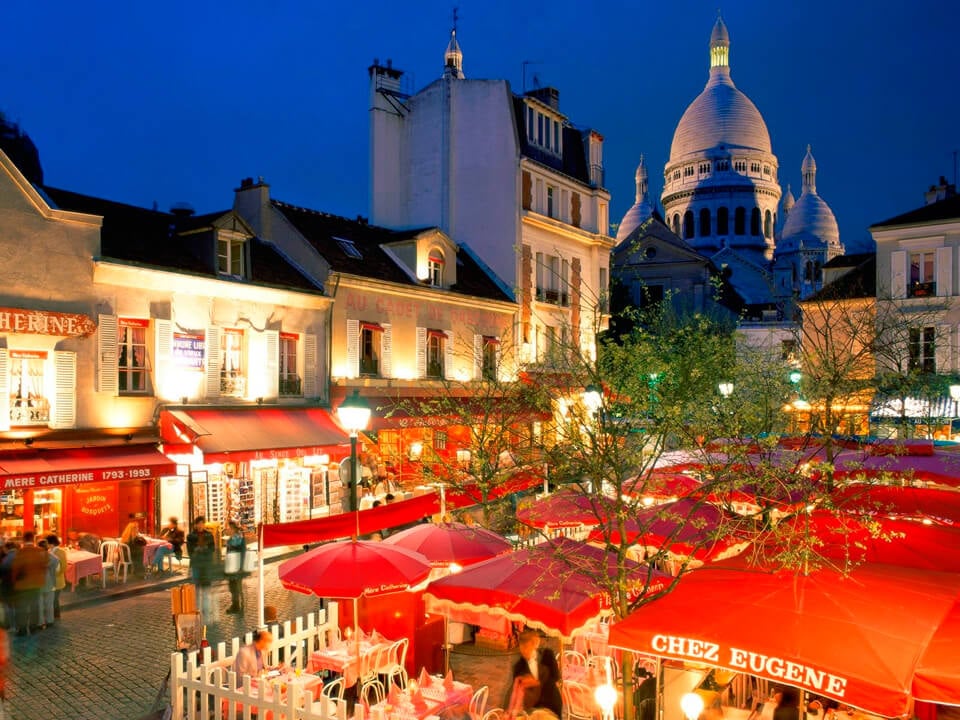
The main square of Montmartre, Place du Tertre, is always bustling with tourists, street artists, and local residents. The name likely derives from “tertre,” meaning a place for executions, which were held here in the Middle Ages.
In the early 20th century, artists like Pissarro, Van Gogh, and Picasso began their careers here. Today, young talents work in the square, quickly sketching caricatures or urban landscapes. Almost all buildings hold historical value. Antique shops, art galleries, and cafes occupy the ground floors, proudly displaying photographs of their famous visitors.
Museum of Montmartre
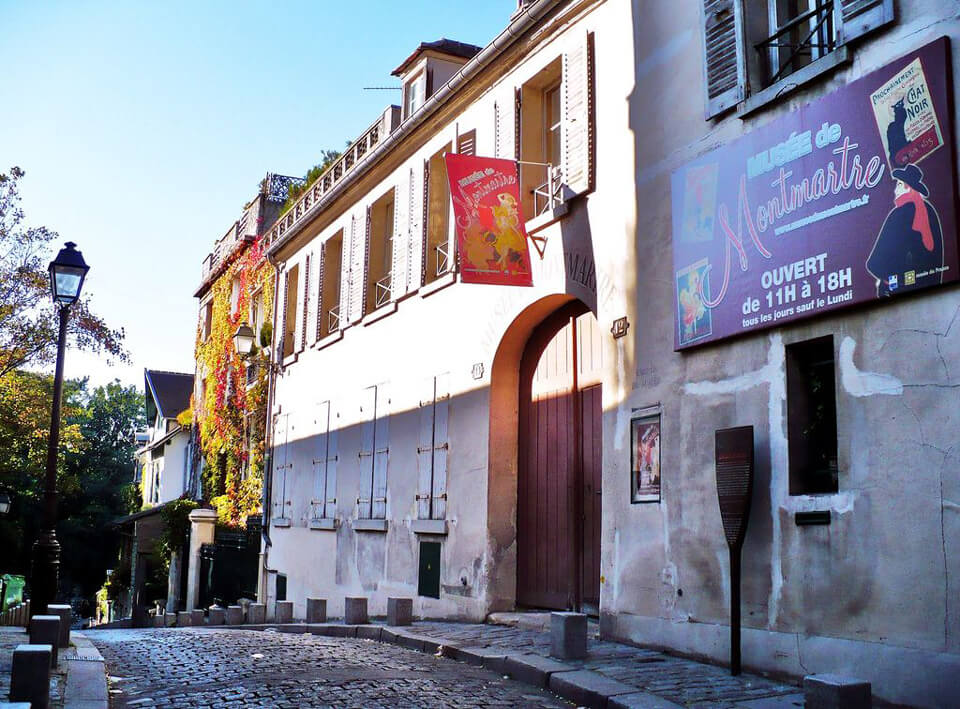
After strolling through Place du Tertre, drinking coffee, and receiving their portraits, visitors head for real masterpieces in the Museum of Montmartre. It is located in the 17th-century mansion Rosimond. Initially, it housed actor Molière’s troupe, artist Dufy, and musician Satie. In the late 19th century, Renoir’s workshop was opened in the building, later passing to gymnast and artist Valadon and her son. The family lived in the house for several decades.
The museum’s collection includes posters, paintings by famous artists, and photographs. Exhibitions cover themes such as:
- The history of Montmartre from its simple settlement days
- The Paris Commune and the bloody crackdown on its participants
- “Festive Montmartre,” showcasing the entertainment industry: cabarets and ballroom halls, posters of stars, and dancers’ costumes
- “Bohemian Montmartre”
The museum also hosts temporary exhibitions and events, has an extensive library, and a collection of chanson recordings.
Cabaret “Le Lapin Agile”
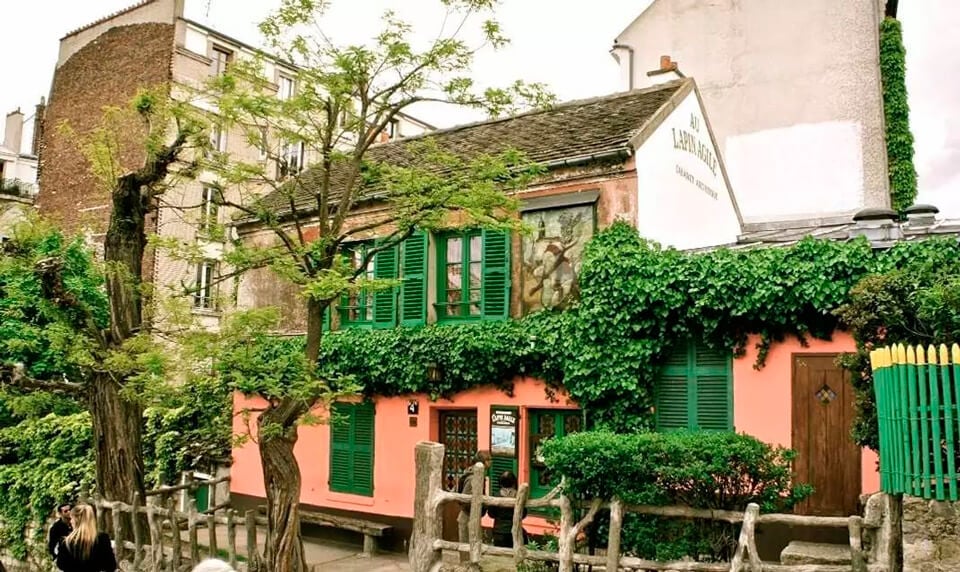
The two-story cabaret building is hidden on the hillside and is not easy to find without the exact address. The house looks like a fairy tale structure, painted purple with a sign depicting a giant rabbit holding a wine bottle. Inside, there is a cloakroom and a small hall. Performances take place on the second floor in a dimly lit room, with actors sitting among the audience. The hall is decorated with paintings depicting the bohemian life of the neighborhood. The program has hardly changed over the century, featuring French songs from Édith Piaf, Charles Aznavour, Joe Dassin, and others, accompanied by guitar, accordion, and piano. Actors read poems and perform short plays in a relaxed and warm atmosphere.
Vineyards
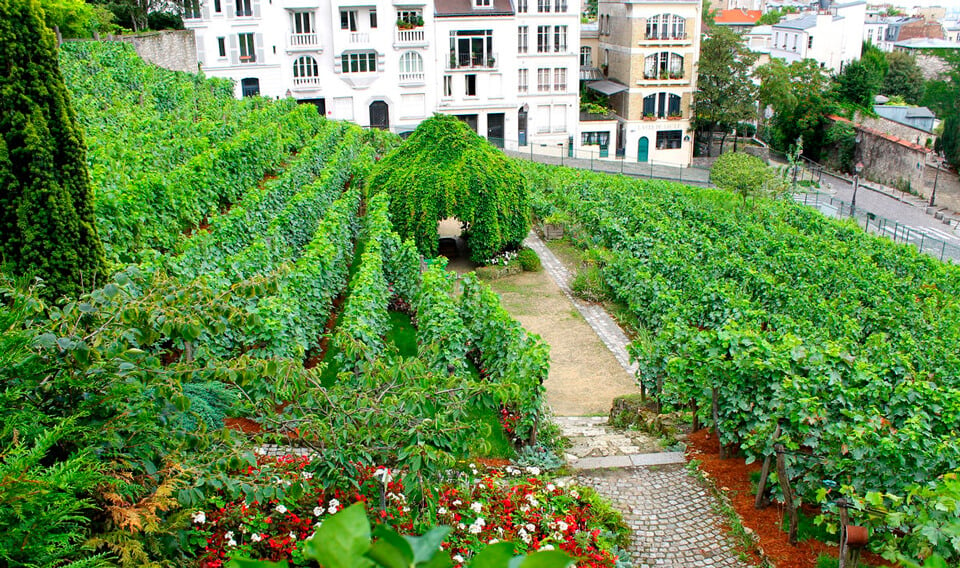
The district’s vineyards are located on Rue des Saules and Rue Saint-Vincent, covering an area of just over 1.5 hectares. There are 1,762 vines of 27 varieties, producing up to 500 liters of wine annually. Since the 1930s, the New Wine Festival has been celebrated in October. According to legend, the first vine was planted by the Romans in 120 AD. In the Middle Ages, almost all hill residents engaged in viticulture, and vineyards occupied a significant portion of the area.
Many taverns and pubs emerged, attracting visitors from the capital, as wine was much cheaper in the suburbs. When the area became part of Paris, vineyards dwindled, replaced by houses. In 1929, artist Poulbot and his supporters saved the remnants of this historical site. In 1933, residents restored the vineyard on the northern slope.
Moulin de la Galette
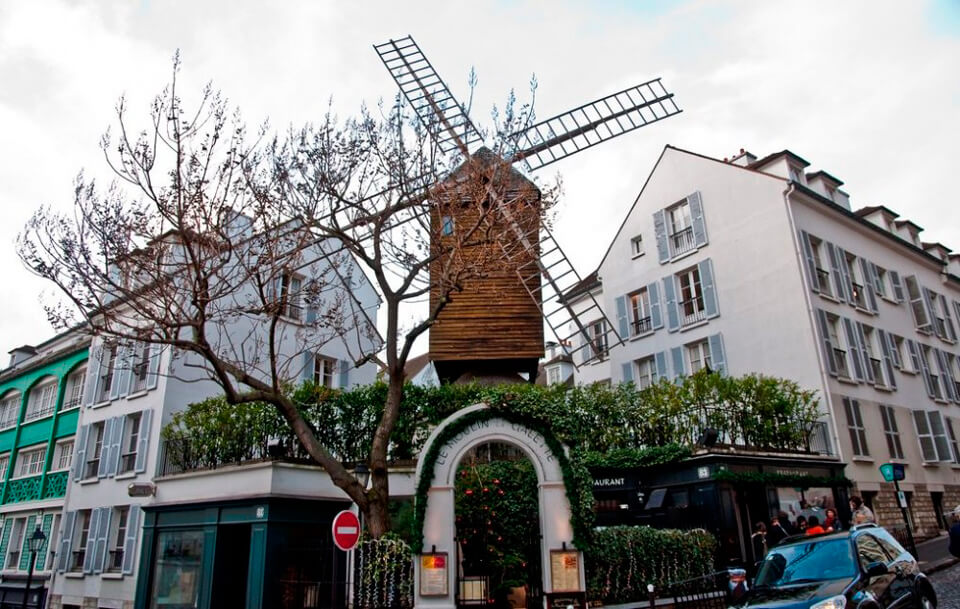
“Galette Mill” was built in 1622. Initially, it was used as a mill, but one day its owners, the Debray family, built a canopy and set up tables, creating the first restaurant with a dance hall. In good weather, people enjoyed themselves outdoors; in rainy weather, they gathered in a barn-like building. Initially, workers and seamstresses came here to dance and have fun after a day’s work. By the late 19th century, the mill attracted artists, actors, and musicians, now world-famous. It is located at the intersection of Rue Lepic and Rue Tholozé and is protected by the state.
Café “Les Deux Moulins”

The café gained fame after the 2001 release of the film “Amélie,” part of which was set there. New elements appeared after the film, such as a poster with the actress Tautou’s autograph and a small film museum curiously placed in the men’s restroom.
Opened in the early 20th century, the café’s interior has remained unchanged since the 1950s. Even the menu is the same, with the new owner only replacing the tobacco kiosk and changing tablecloths to paper napkins. This cozy bistro with a homely atmosphere serves coffee, wine, and the main dessert—crème brûlée with cardamom.
Cabaret “Moulin Rouge”
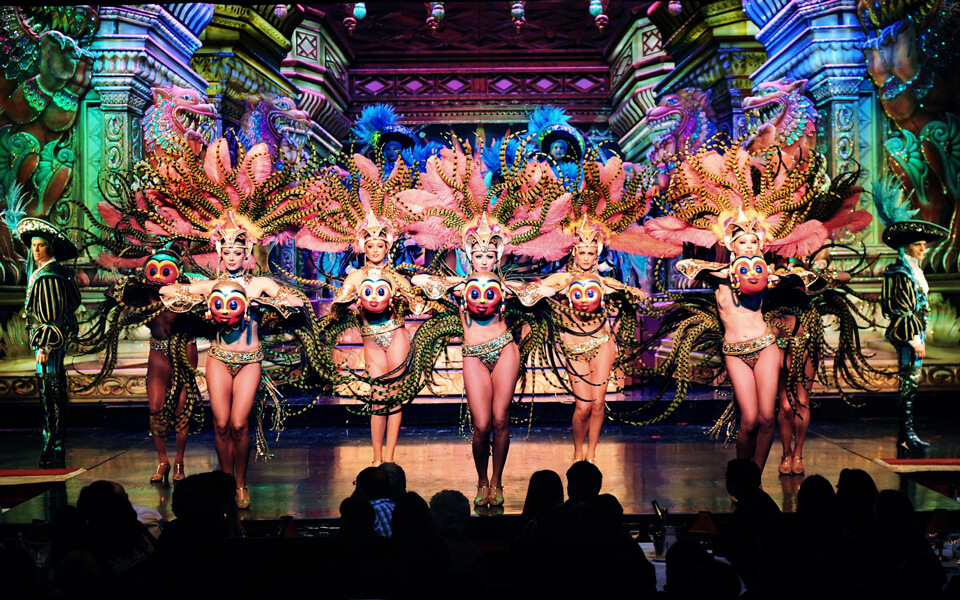
“Moulin Rouge” (“Red Mill”) is the most famous cabaret. Founded in 1889 by Ollier and Zidler, it became popular within months of opening. Tickets must be booked in advance, especially for holidays. Here, the cancan was first performed to Offenbach’s music, and Toulouse-Lautrec created his artworks. The cabaret still displays posters painted by the artist.
The show lasts 1 hour and 45 minutes, featuring themes such as:
- “Moulin Rouge” yesterday and today
- The story of the pirate Sandokan
- Circus show
- The history of cabaret dedicated to women who made it famous
- A lively cancan ends the performance
- Chicago show
The productions involve 80 artists, over 140 musicians and singers, and 1,000 colorful costumes designed by famous designers, adorned with rhinestones and feathers. It’s a spectacular show!
Cemetery
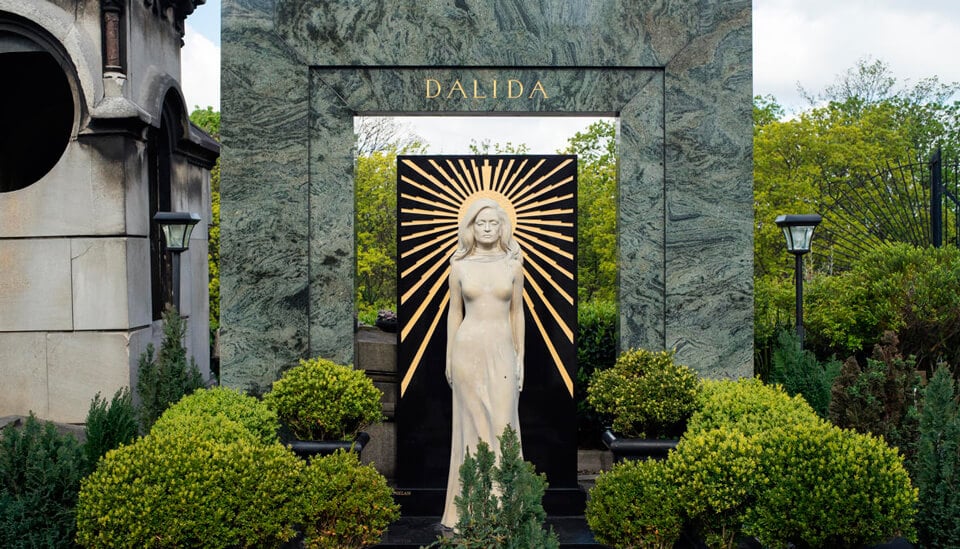
Opened on January 1, 1825, on the site of a gypsum quarry, the cemetery covers 11 hectares in the western part of the district. It now has 20,000 graves, with 500 new graves added annually as it is still an active cemetery. Visitors are given a map of the area at the entrance.
Famous actors, artists, musicians, and political figures such as Offenbach, saxophone inventor Sax, painters Degas and Moreau, writers Heine, Stendhal, and Dumas fils are buried here. Alphonsine Duplessis, immortalized by Dumas in “The Lady of the Camellias,” and Dalida, whose grave always has fresh flowers, are also interred here.
Boulevard de Clichy and Place Pigalle

Boulevard de Clichy is home to hundreds of sex shops, nightclubs with risqué shows, and strip clubs, making it the center of Paris’s nightlife. It is also interesting to stroll here during the day. Historically, the boulevard is famous for the battle between the Russian and French armies during the 1814 campaign. Van Gogh often depicted this place in his paintings and frequented the café “Le Tambourin” located here.
The Erotic Museum, opened in 1997, is also located on the boulevard. The first floor features an exhibition on 19th and 20th-century brothels, displaying furniture and erotic devices used in legalized brothels. The second floor houses erotic-themed paintings by contemporary artists, caricatures, and sexual sculptures.
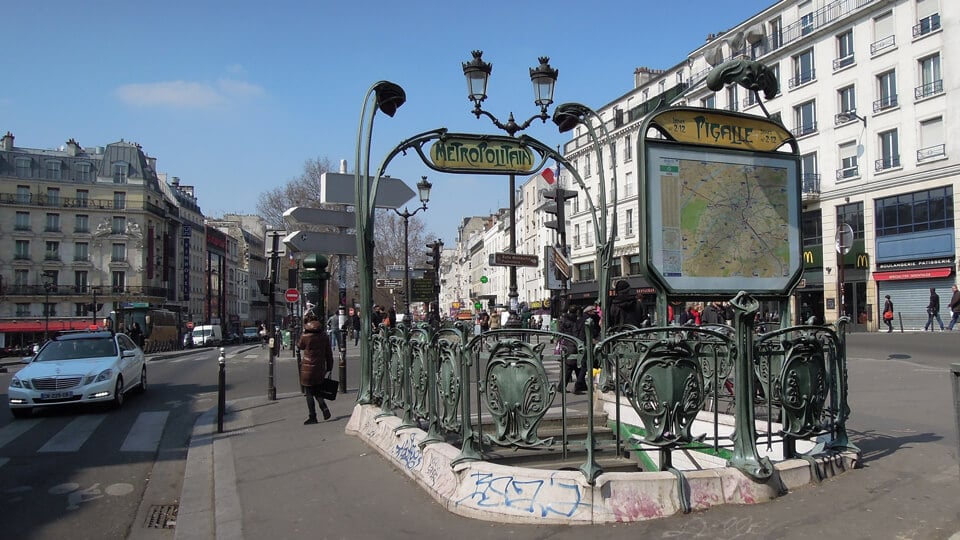
Strolling down the boulevard, you reach Place Pigalle, also favored by the artistic bohemia. Here is the famous café “Le Chat Noir.” Interestingly, many famous visitors, unable to afford to pay, settled their bills with their drawings, including Picasso, Renoir, and Degas. Today, it has become the red-light district, with sex shops at every corner and risqué items sold even on the street. It’s best not to walk here with children. In the evening, you can encounter representatives of the world’s oldest profession at every turn.
Location and How to Get There
Montmartre is located in the 18th arrondissement of Paris, France.
How to Get There: Take the metro to the stops: Anvers, Pigalle, Blanche (Line 2); Lamarck, Caulaincourt, and Abbesses (Line 12). Then, either climb the stairs or use the funicular.
With so many attractions concentrated in the Montmartre district, it’s difficult to describe and list them all. If you are fortunate enough to visit the French capital, be sure to explore this bohemian neighborhood.

